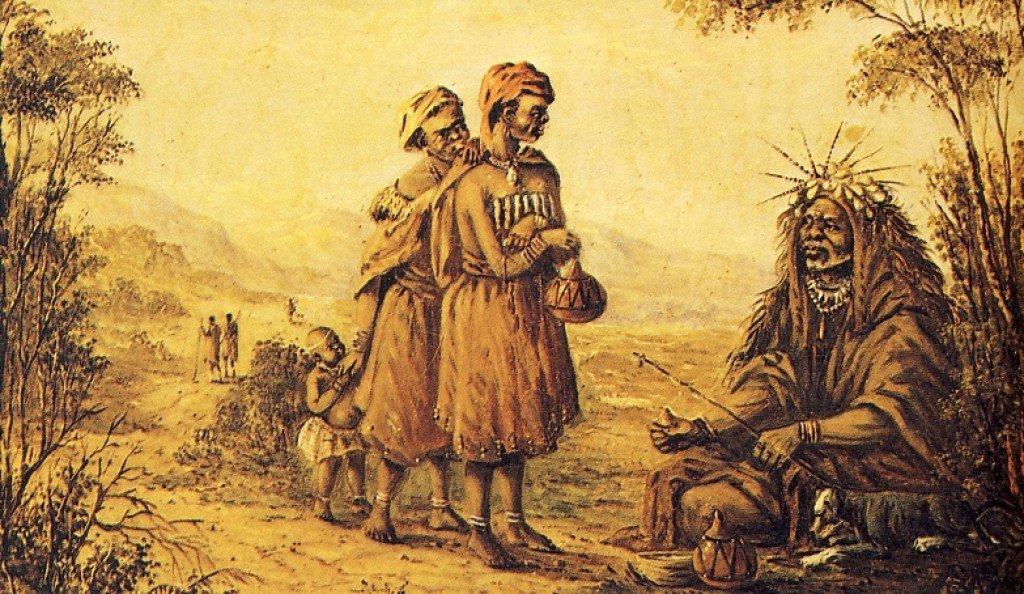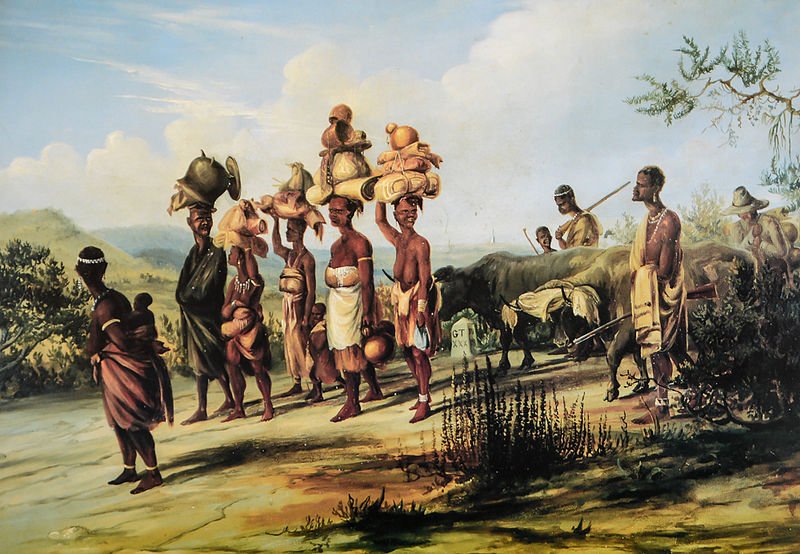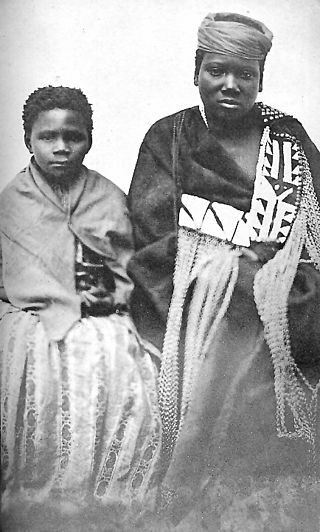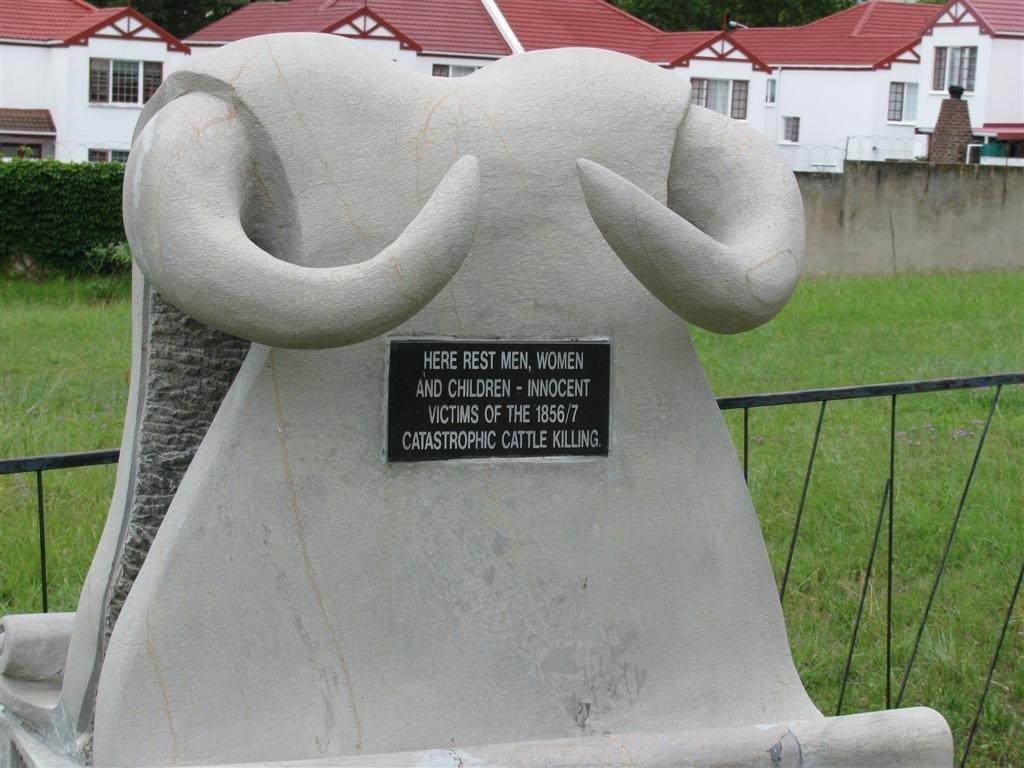
Why do nations sometimes lurch into spectacular acts of self-destruction? A strange fervour that seized the Xhosa people of South Africa in the 1850s may shed some light on Brexit, writes Tom Scott.
The history of southern Africa is not short on plunder, cruelty and betrayal. But as a student of it some years ago, I was struck by one peculiarly cataclysmic and seemingly inexplicable episode: the great Xhosa cattle killing of 1856-7. It’s a story I’ve found myself thinking about quite a bit since the EU referendum of 2016.

At that time the Xhosa people were a large group of loosely linked clans that occupied much of the eastern and central part of what is now South Africa, where they led a pastoral existence centred on the keeping of cattle and the growing of sorghum and maize. But conditions by the mid-19th century were far from idyllic – the Xhosa were coming under intense pressure from the eastward expansion of Afrikaner settlers and from British colonial forces. In 1847, the bulk of their lands had been annexed as the crown dependency of British Kaffraria.
Meanwhile, the Xhosa’s more warlike neighbours, the Zulu, were making inroads from the north and east. On top of this, the region was hit by first by drought and then by torrential rains, and in 1854 these problems were compounded by a new cattle disease known as lungsickness, thought to have arrived with livestock owned by the Boer settlers.

In April 1856, a Xhosa girl named Nongqawuse went out to scare birds away from the crops. She returned to her family with a strange tale. She had met three spirits who had an urgent message to pass on to her people: all their cattle should be slaughtered and their crops destroyed. If these instructions were followed, the ancestors of the Xhosa would rise from the dead, drive the white settlers from their lands and replace the slaughtered cattle with new herds.
Nongqawuse’s uncle, a well-known diviner named Mhlakaza, went to the bush to investigate and came back confirming her story. When the prophecy was repeated to the paramount chief of the Xhosa, Sarhili, he ordered his people to follow the spirits’ commandments, but – perhaps as an initial experiment – to start by killing only their fattest cattle.
While this was being done, Nongqawuse and Mhlakaza continued to commune with the spirits. These urged the Xhosa to step up the destruction and promised ever greater rewards that would flow from it: the aged would regain their youth, grain stores would overflow and all kinds of material goods would magically appear. And, in case this were not incentive enough, any Xhosa who had failed to follow their instructions would be turned into frogs, mice or ants.
A few clan leaders were sceptical, but their voices were drowned out amid the millennial fervour. As Charles Brownlee, a colonial officer who witnessed the episode, wrote: “The most remarkable circumstance connected with the delusion was the earnestness with which most entered into it, regarding those who opposed the movement with the greatest animosity.” Anyone who has engaged in debate with convinced Brexiters may sympathise.
As the blood of the slaughtered beasts flowed and the crops burned, large enclosures were prepared for the arrival of the magnificent new herds promised by the spirits and great skin sacks made to hold their abundant milk.
A date for the promised wonders to occur had been set by the spirit voices: 18 February 1857, when the rising of a red sun would herald the miraculous transformation. As the day dawned, crowds gathered in eager anticipation of the glorious return of their ancestors.
Their failure to appear was met with confusion and dismay. It rapidly became clear that the Xhosa had rendered themselves utterly destitute, and the people were soon reduced to digging roots and eating what they could salvage from the rotting carcasses of their slaughtered herds. Many thousands died of starvation; others survived by fleeing to Cape Colony to seek work on white farms.

Mhlakaza and most of his family starved to death. Nongqawuse, who had set the whole tragedy in motion, was arrested by the British as an agitator and imprisoned on Robben Island. After her release, she subsisted as a farm labourer in the Alexandria district of the eastern Cape, where she died in 1898.
In 2016 the Brexiters, channelling ancestral voices of their own, urged us to make a leap of faith in defiance of a mountain of expert evidence as to its likely impacts. Many people were inclined to believe their assurances that a brave new world awaited us after we’d well and truly burned our EU boats. Others seemed to feel – perhaps like the Xhosa – that their lives had become so insecure and impoverished that they had little to lose by taking a leap into the dark.
Like the Xhosa’s spirit guides, the Brexiters have refused all suggestion that a less drastic version of their magical transformation might be possible. Those pointing out that tens of thousands of jobs have already been destroyed and that much worse is to come are dismissed as faint-hearted advocates of “Project Fear”.
While the people of the UK are not yet obliged to survive on weeds and rotting carcasses, there are many signs that an economic catastrophe is looming. The miraculous mountains of cash – advertised on Brexit buses and in countless interviews – are no more likely to materialise than the herds of fat cattle promised to the Xhosa.
My guess is that Nigel Farage and Boris Johnson will be remembered in rather the same way as Mhlakaza and Nongqawuse are remembered by the Xhosa people of today – as false prophets who induced mass delusion and an act of spectacular national self-immolation.




